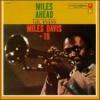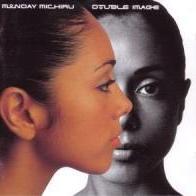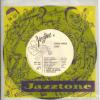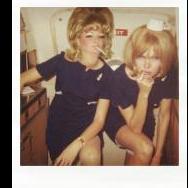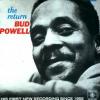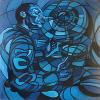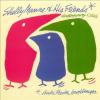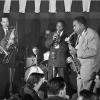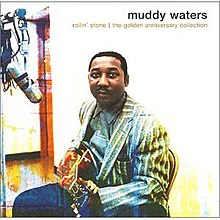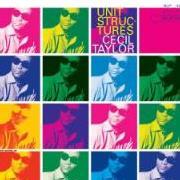Search the Community
Showing results for 'Patty Waters'.
-
I've read a few articles recently about the new economics of the music business. Here's one, which is long but which I found really interesting: https://www.newyorker.com/magazine/2022/12/12/so-you-want-to-be-a-tiktok-star Here's what's relevant to your question: Swift built her career during the file-sharing era, which changed the business model for many artists, shifting the main source of revenue away from recorded music, which can be pirated, and toward ticket sales to live events. The pandemic ended the touring economy almost overnight. Live-streamed concerts tried to fill the void, but they were pale substitutes for the real thing. With everyone stuck at home, TikTok became the show. Tours returned in full force in 2022, but the TikTok algorithm has remained the sun around which the music industry orbits, and the arbiter-in-chief of what’s hot. Top Ten songs on radio and streaming charts often start trending first on TikTok. As many as a hundred thousand new tracks are now released by record labels and individual musicians every day on any number of platforms. Having a viral video attached to part of a song is one of the few ways to capture anyone’s attention. Virality also tilts the arcane economics of streaming in the copyright holders’ favor, because the worth of any single stream is based on the percentage of a streaming platform’s total monthly streams that the song commands. In other words, a lot of listens in a short amount of time will make you more money per stream than a slow-burner will. In a nutshell: People make TikTok videos. They're short, but they still need music. If the TikTok creator uses Waters's version rather than Pink Floyd's, Waters will earn the royalties from that TikTok view. Each view's earnings might be minimal, but it can add up, especially if the algorithm pushes the video to people who might not otherwise see it. Here's another fascinating article, but you may encounter a firewall: https://www.wsj.com/arts-culture/music/streaming-is-changing-the-sound-of-music-182dc907?mod=Searchresults_pos12&page=1 This will be relevant if Waters rearranged any of the DSOTM songs to move the hook or chorus to the initial 30 seconds of the song.
-
Anyone aware of Roger Waters remaking this classic album? What's the point? And he's been a prick about it (which is usual, from what I gather), not even telling his ex-bandmates about it. I listened to "Time"...sorry, his new version sucks.
-
If this was so then that footage would have been here somewhere in between (as per the link I provided in an earlier reply). Does this appear plausible? 61 28. November 1970 Stone the Crows - Danger Zone Colosseum - Take Me Back To Doomsday Fotheringay - Too Much Of Nothing Muddy Waters - Blow Wind Blow Muddy Waters - Honey Bee Colosseum - Tanglewood '63 Stone The Crows - Love 74
-
Whilst we are on Zappa and blues, does anyone know, from interviews or books, what blues musicians most influenced Zappa's own blues writing? His blues tracks generally sound quite similar to each other, but don't sound much like the standard Muddy Waters template that much white blues of the era starts with. (Not intending to say that all white blues of the 60s sounds like Muddy Waters, but, if it isn't MW, it is often quite easy to spot whatever the influence is, whereas here I find it harder. I may just not be familiar.) Howling Wolf's raspier records are obviously in there. Rhythmically I hear Billy Boy Arnold, maybe?
-
Airshots of some really good bands here, with really good books that lean into bop more often than not. Also, some really good, occasionally extended Prestastic solos by Allen Eager. As well, a few brief but unmistakeable contributions from Warne Marsh. And Buddy is always swinging (sic). He sings here and there, and dies not suck. Models here are Basie and Herman. People with an interest in Post WWII big bands navigating the dance/bop waters would be well-advised to check out these recordings! If you only want one, get the first one. The second one fleshes things out, but is not the near-essential document that the first one is. Again, some really good bands here!
-
Lou Waters Lu Watters Ernie Watts
-
she is indeed extremely good, and she sticks out in a place where most singers, good and bad, have become, to my ears, somewhat generic. But I find that no matter how good they are I cannot listen for very long. Not sure I can put my finger on it but it is as though the whole genre - of jazz singing - lacks for a compelling alternative to the older styles. I used to think of Patty Waters as showing the way out, but that's been years since. I feel like there is some middle ground, some good use of lyric texts that might be possible (never did like late Betty Carter), but I just don't hear it anywhere. Maybe because I just don't find current songwriting compelling, lyrically or melodically. But there must be something somewhere.
-
But all seriousness aside, I want a critic to tell me something I don't know, to show me something in the music that I have not already seen/heard. And there are a few who have done this, whom I think have made real contributions to American culture. In no special order I would mention: 1) Greg Tate in his earlier days. Greg was a wonderful person, though his later work was a bit captive of trendiness and what almost sounded like promotional writing. But his work in his first collection (Flyboy) is brilliant and insightful and indispensable. 2) Gary Giddins - Gary was a real jerk to me (he basically libeled me in print, a long story) but did some terrific writing. Read, for one example, his essay on Ethel Waters, one of the best things I have ever read. His weakness was pretending at times to have technical musical knowledge (and btw this proves that Justin V, or whatever his name is, unfairly attributed my negativity toward a musician to rejection; Gary's remarks about me were unforgivable, but I am able to separate the personal from the objective). 3) Larry Kart - Larry is also a friend, so there is something of a conflict of interest here, but he is a brilliant writer whose constant insight into a variety of jazz topics is one of the highlights of jazz writing. His work is like little explosions of light, and he is great, also, purely as a writer. 4) Francis Davis - another who has become a friend, but I think he is brilliant and a great writer, full of illuminating perspectives and smart cultural insight. I also love the guy and am personally saddened at his current sickness. thank you.
-
Joshua Jaswon Octet - Polar Waters [Ubuntu, UK 2023] A completely new name to me when I heard a track on the radio last weekend. All our recent chat about British Jazz, here's a writer/arranger/player who sounds to me steeped in that tradition (even has a Norma Winstone-esque vocalist in the frontline) but at the same time presenting something modern and fresh. A real find
-
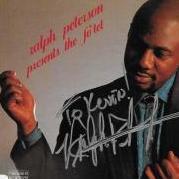
LF Transition label LP TRLP-18
Kevin Bresnahan replied to Stonewall15's topic in Offering and Looking For...
I tried messaging Cary Baker on Facebook since he is listed as being the one who interviewed Jay's widow Patty for the recent Omnivore release of a lost Migliori date. I don't know if he'll answer a random Facebook person's request, so if anyone knows him, see if you can get him to ask Patty about this. -
Let's not forget the James P. Johnson Mosaic, which included sessions by Lavinia Turner, Sadie Jackson, Bessie Smith, Rosa Henderson, Martha Copeland, Ethel Waters, Clara Smith, Eva Taylor, Ruby Smith, and Ida Cox.
-
Patty Duke Duke Jordan The Jordanaires
-
Though I have not idea what the title means or who is that group, my attention was taken to that lure with three triple hooks. As it seems that you are a fisherman too, this kind of setting of three triple hooks is really a downer. Not only that it hurts the fish unnessesarly and you might have also all them free hooks in the landing net and it takes time to get them out, as more hooks you have as more fish you loose. That lure is to small so many hooks, I can understand it for big fish with XXL lures on lower waters, but not on an upper section of a River where there might be trouts. Here in Austria, for trout rivers we have "Fly Only" with barbless single hook.....
-
There are some good blues threads on here already, but they generally stick to the classic blues template laid down by the likes of Muddy Waters, Hound Dog Taylor, BB King, etc. I would love to hear recommendations of your favourite blues LPs that depart from that template. No particular requirements other than (1) being clearly blues, (2) being post war, and (3) departing from the well known style. I am looking for blues LPs with different instrumentation, fingerpicking, psychedelic edges or effects, more fragile vocals, more crazy vocals, horn sections, electric keyboards, different rhythms (Latin or afrobeat), part way to soul, heavy metal or funk, or just general weirdness or idiosyncrasy. Post war only, please. Pre war blues has long been a favourite genre of mine, and I feel more comfortable there.
-
which I will print here in its entirety, unless the moderators find it excessive. And if you like, it is not too late to order; I will briefly offer the whole project - two books and thirty cds - to all Organissimo members for $150 shipped USA, a discount from the usual $175 shipped USA: Allen Lowe. “ Turn Me Loose White Man” Or: Appropriating Culture: How to Listen to American Music, 1900-1960, vols. 1 & 2. Hamden, CT: Constant Sorrow Press, 2020/ 2021. x þ 352 pages, 397 pages, 30 CDs. by Eric Lott If you too have been waiting for a magisterial study of popular music animated by traditional racism and religiosity, victims of irony, dynamics of resistance, Christian warfare, God’s militia, the Confederacy in absentia, crimes of sentiment, country folk’s synchronized swim, praying for good sex, proletarian orchestras (in church), worldly cluelessness, the rhythm method (“a more subtle kind of resistance”), plant-based courtship (I’ll poke it through the window), love and booty, white moments of feeling, Death Be Not Barefoot, out of the mouths of white people, victims of style, and the Hawaiian version of the Baja marimba band, the wait is over. Allen Lowe’s “ Turn Me Loose White Man” Or: Appropriating Culture: How to Listen to American Music, 1900-1960 is here. The foregoing names only the first half of its table of contents more or less (vol. 1), but volume 2 follows suit (e.g., the minstrel wound, hillbillies with 401k’s, gospel in drag), and the writing lives up to its billing in punch and pith. All of it with a lucid and irrecusable rendering of the politics of cultural appropriation, but don’t expect a scolding, despite its how-to subtitle. Right on time with the arrival of The Harry Smith B-Sides (Dust-to-Digital’s new collection of the flip-sides of Smith’s famous 1952 Anthology of American Folk Music’s 78s), Lowe’s two prodigal volumes and their accompanying 30 CDs (each with 25-30 songs, 798 in all) far outpace the Smith compilations, which featured 84 A-sides and now 81 B-sides (three cut for racist lyrics) for a total of 165—not that it’s a contest, particularly since the projects do not conceptually overlap. Where Smith sought to conjure an occult Other America, Lowe means to trace various points of genre and stylistic inception, elaboration, and transformation, with an eye especially to the ways commercial song walked the color line. Greil Marcus in Invisible Republic: Bob Dylan’s Basement Tapes (renamed The Old, Weird America) (1997) famously argued that Smith in his Anthology created a “Smithville” in which racial boundaries sometimes became so blurred as to disappear. While often blurry in Lowe’s volumes, racial lines quite rightly haunt everything, lyrically, musically, and above all politically. The two volumes are appropriately titled. Lowe captures as well as anyone I’ve read the Jim Crow strictures and cruelties often audible in musical cultures that nonetheless are always all up in one another’s Journal of Popular Music Studies, Volume 35, Number 1, pp. 139–144, Electronic ISSN: 1533-1598 © 2023 by the International Association for the Study of Popular Music, U.S. Branch (IASPM-US). All rights reserved. Please direct all requests for permission to photocopy or reproduce article content through the University of California Press’s Reprints and Permissions web page, https://www.ucpress.edu/journals/reprints-permissions. DOI: https://doi.org/ 10.1525/jpms.2023.35.1.139 business, mostly to surprising effect. As I say, Lowe doesn’t finger-wag or preach over all this but rather explores, notes ironies, lays out contradictions, and not infrequently waxes mordantly funny at the results. And he is way beyond understanding Black music as the sum of its miseries. For Lowe, apartheid America structures but doesn’t a priori define the nation’s musical outcomes. Before digging in, it’s worth noting just what is in front of you when you encounter this stunning archival effort. Lowe’s ear-boggling retrievals of U.S. vernacular musicking going back to the late nineteenth century are all selected from his personal collection as exemplary pieces for his purposes. Since much of it on the early end is of poor sound quality, he did capable sound restoration on it. Mastering and digitizing multiple CD sets for distribution was no doubt an operation in its own right. Lowe did due diligence as discographer, tracking down personnel, recording dates, locations, and cultural coordinates for as many of the recordings as possible. And it was a one-man job: literary historians such as big-data “distant reading” Franco Moretti employ whole teams of researchers to do analogous projects. The books themselves, handsomely self-published, proceed essentially song by song through all 30 CDs from just before 1900 to around 1960, annotations that continually rise to the level of musicological and cultural analysis of a high and readable order; local insights connect to multiple arcs of development and sudden left-turn innovation in what feels like real time (as well as they are written, the books require readerly patience). It’s not unlike spending roughly 2,025 minutes or 34 hours—five whole business days with lunch breaks, more or less—listening along with an excited, loquacious, acute, and inexhaustibly knowledgeable host tracking and tracing certain evolutions in pop music over the first six decades of the twentieth century. No wonder Lowe writes in a preface that “this is really the last such project I will do, at least without a grant or a substantial cash advance (meaning that, yes, this is really the last such project I will do)” (I, 2). I’ll believe that when I (don’t) see it. Because that “last,” for those unfamiliar with Lowe’s work, alludes to a number of fine previous books (with accompanying CDs) including Really the Blues?: A Horizontal Chronicle of the Vertical Blues 1893-1959, That Devilin’ Tune: A Jazz History 1900-1950, American Pop—From Minstrel to Mojo: On Record 1893-1956, and God Didn’t Like It: Electric Hillbillies, Singing Preachers, and the Beginning of Rock and Roll 1950-1970, which over the years have garnered praise from Francis Davis, John Szwed, David Hajdu, Jonathan Lethem, Jody Rosen, Peter Stampfel, Robin Kelley, Greg Tate, and Greil Marcus, among others, the last two of whom provided tandem introductions to the books under review. And for those who don’t know, Lowe is an excellent and esteemed avant-garde saxophonist who has played and recorded with Julius Hemphill, Marc Ribot, David Murray, Roswell Rudd, Matthew Shipp, Gary Bartz, Don Byron, and many more, with more than twenty albums as leader to his credit. This high-end performance background, coupled with his scholarship, is certainly one context for the ear-driven distinctions Lowe makes throughout “ Turn Me Loose White Man”—his ear is trained, and he listens carefully. Indeed, thinking with his ears from pop to blues to country to jazz (and also, along the way, pre-jazz, precountry, minstrel, ragtime, folk, rhythm & blues, gospel, show music, and rock ‘n’ roll), Lowe, to note one instance among dozens, can suggest almost in passing that while Fred Van Eps’s “Florida Rag” (1912) is technically able, it is no match in spry facility for Vess Ossman’s “Chicken Chowder” (1906), and if you too can casually do that, more power to you (I, 41). And where Harry Smith and later commentators such as Marcus pursue a vaguely mystified, sometimes class- and race-blind vision of an esoteric America (and in this regard see also Rani Singh’s appallingly white- and male-centric documentary The Old, Weird America: Harry Smith’s Anthology of American Folk Music [2007]), Lowe in example after example hears otherwise: “the history of American music, to my ears, is essentially a timeline of African Americans liberating themselves in sound, creating an alternative history to that which has been imposed on them” (I, 9). Lowe’s governing emphasis on cultural appropriation has political currency, of course, but it’s to his great credit that he renders the matter with a confounding intricacy worthy of his materials. All down the line Lowe is level-headed and lucid—if at times blunt and candid—about the gnarled contradictions and paradoxes he finds. Operating with the now relatively uncontroversial notion that “a great deal, if not all, of American music is rooted in forms that derive in some way from Minstrelsy” (I, 15), Lowe consistently delivers the nuances of a given situation. In a history far messier than the mechanical theft of Black sounds and images for white sport and profit, U.S. musicking was through the decades an arena of exchange, larceny, fantasy, and desire structured in racial dominance in which each party (each of them multiple!) exerted its influence and lived through the changes, across many genres in many locations, fueled by widespread commercial distribution, whatever the format (street, stage, wax cylinder, shellac 78, radio, jukebox, vinyl 33 1/3). The upshot of all this, Lowe correctly notes, is that the broad diffusion of minstrelsy and post-minstrel cultural forms, Black as well as white, “created a mass movement of sound and motion that had shattering effect [sic] on all of not just American music but, categorically, American culture” (I, 15–16). Minstrelsy as the collective engine of cultural revolution—say what? That is, for better and worse, one of the main outlines of the story Lowe has to tell and attempts to track. Lowe’s song-by-song presentation of his musical examples tends to bury ledes (everywhere), but they nonetheless grab you. Here is one: Some of the strangeness of early jazz surely, I would say, has to do with the slow and gradual removal of the minstrel mask from both white and black performers. What lies beneath is still often an expression of perplexed, racial ambivalence, a sense that fantasy has replaced reality for so long that we no longer can determine precisely which is which. So black performers, as a habit (and not necessarily as a bad habit but as a professional habit), in the process of throwing off real and perceived professional chains, often remain in debt to a complicated and conflicted history of both professional and social enslavement, juxtaposed with a paradoxical form of liberation that is still part enslavement. (I, 51) “What lies beneath” the mask is less roots than once and future ambivalence and crossracial debt, liberation in chains, points of resistance and moments of supersession. As Stuart Hall once put it, this is the dialectic of cultural struggle.1 1. Stuart Hall, “Notes on Deconstructing ‘the Popular,’” in People’s History and Socialist Theory, ed. Raphael Samuel (New York: Routledge, 2016) [1981], 227–39. Lott | Book Review: “Turn Me Loose White Man” Where once it was commonplace to assume a clear distinction between debased culture industries such as minstrelsy and authentic folk and roots cultures both white and Black, it is now widely regarded a mixed-up, commercially saturated situation all the way down. As the blues arose in part out of traveling Black minstrel shows, so early country music often sported blackface on the National Life and Accident Insurance Company’s Grand Ole Opry stage. In this sense, Lowe contends, minstrelsy wasn’t dead but rather embedded everywhere, from the early-country minstrel religiosity of Ernest Thompson’s “Climb Up Them Golden Stairs” (1924) to Louis Armstrong’s hip yet flamboyant wresting of, signifying on, and thereby controlling the minstrel template to his advantage (I, 70). This at a time when Black sounds were unremittingly (and not unwittingly) infiltrating white musical modalities, with minstrelsy the vehicle, producing what Lowe calls the “deep and ugly contradiction” of a dominant culture attending to and inspired by a culture it continued to exploit (I, 72). Was white country music a communal gathering of the like-minded whose basic response to Jim Crow was to continue to do what came naturally, pursuing a method of liberation that didn’t appear to threaten anything? Or did it willfully submit itself to Black ideas and performance innovations in ways that radiated shocks through the system, however subtle? Yes to both, or Love and Thrift, as Lowe styles it in response to my notion of Love and Theft (II, 51).2 Lowe is fascinating on the fretboard intersections of country and blues in the banjo playing of (Black) Jimmy Strothers (1936) and the guitar of (white) Utah Smith (1944), who by turns (of phrase, even) fuse Black and white musical gestures while looking forward to both rock ‘n’ roll and bluegrass (II, 54–55). He does not shrink from proposing Al Jolson as a central figure influencing the development of American singing—check his analysis of the Jolson-y Black group The Bubbling Over Five (1929) (I, 227–28)—but is not unaware that Jolson occupied an altogether different sphere of influence than Charley Patton or Son House. Attuned to the complexities of minstrelsy, as well as segregated sound (in Karl Hagstrom Miller’s sally), privileging neither racial crosstalk nor apparently endogamous local knowledge, Lowe follows the music.3 He is as fresh on Armstrong’s singular innovations as he is precise on the ways Bing Crosby made cunning use of them (I, 137–8, 250). So it goes, in performers fleeting or enduring, local genre permutations and lasting subgenres such as honkytonk. Part of the irreducible pleasure of these volumes, impossible to convey in a review, is in seeing the year-to-year developments occasionally rise to the level of the transmundane (Elder Johnson’s amazing “God Didn’t Like It” [1948]) or explode by way of supernovas (Thelonious Monk at around the same time). Lowe proceeds with performer-by-performer discipline but is chatty and capacious enough in his purview to maintain a roomy feel (albeit with zingers aplenty). This produces a rather novel and indeed salutary music-history temporality in which stars and standouts live in the loam of everyday musicking that buttressed and sustained them. Lowe doesn’t mystify the nearly 2. Eric Lott, Love & Theft: Blackface Minstrelsy and the American Working Class (New York: Oxford University Press, 1993). 3. Karl Hagstrom Miller, Segregating Sound: Inventing Folk and Pop Music in the Age of Jim Crow (Durham, N.C.: Duke University Press, 2010). anonymous nor let genius take up too much space. It does annoy him that certain writers have tried to take Robert Johnson down a notch by restoring him to the milieu he came from, but then he doesn’t think much of Chuck Berry, a mostly amusing idiosyncrasy (I, 185). The point for Lowe, even when he’s just showing rather than arguing the case, is understanding better the contours of exchange and admixture by looking incrementally at the musical road everybody shared. Also hearing better how self-conscious the exchanges and historical attention often were. Lowe is great on Bob Wills and “country’s search for itself” in the 30s and 40s, built out of old-time fiddle playing, early jazz, Tin Pan Alley, and the Swing Era, hoedown show blues shot through with white jive (ahh-ha!); and he’s good again on Little Walter’s adaptation of old-style country blues to swing-era rules, planting his electrified harp between jazz time and blues accent, all of it audible in “I Just Keep Lovin’ Her” (1947) (II, 181, 189, 105). Lowe excels in isolating the almost scholarly riff allusions of Jelly Roll Morton, his way with Tiger Rag in 1938: “Like an old-days Jaki Byard he has a way of evoking a distant musical past through the surface of a porous musical present. Every note and turn of phrase is like a sideways-glance at some different and distant musical day, shaded by a very personal, present-tense, intellectually and aesthetically active cultural worldview” (II, 116). Ernest Tubb’s “Walking the Floor Over You” (1942), says Lowe, showcases country music’s equally self-conscious interest in conveying “graven images that come at us in three-minute sequences,” less “simple snapshots” than “sonic life studies” (II, 156). Lowe’s way with the issue of appropriation, in other words, opens onto musicking in and as everyday life, which the paratactic side-by-side procedure of these volumes strangely echoes, one after another life-giving medium channeling a broad array of elements: Hank Williams, Memphis Minnie, Faron Young, and Elizabeth Cotten; Little Richard, Little Jimmy Scott, and Lefty Frizzell; The Orioles and The Blue Ridge Quartet; Billy Love and Doris Day; Wanda Jackson, Link Wray, and John Coltrane. One of several compelling statements regarding this connection comes in Lowe’s remarks on what he terms an aesthetic of the homemade, or the homemade as an aesthetic, visible in artists such as Cow Cow Davenport but rising to new heights in Thelonious Monk. Monk, Lowe writes, comes not just from the blues but from that strange twilit zone where minstrelsy, the blues, dance, and old-time pop merged; not just from stride and barrelhouse but the whole house party tradition, where volume and rhythm were as important, if not more so, as melody and tone. Hence “a particular African American stylistic continuum” in which the music is not just self-taught (Black musicians often denied institutional training and traditional forms of employment) but home-made. “Sound in this musical environment was a matter of adapting to so many different kinds of repertoire—think Jug Bands, early plantation bands like Muddy Waters,’ the way in which even players like Charley Patton and Tommy Johnson played pop tunes—that everything was a music in the moment, and it led even musicians who had more of a ‘classical’ approach into some odd stylistic corners.” Imagine Monk touring with an evangelist, which he did: every jazz musician has played for occasions and affairs that demand they dredge up odd pieces of hokum. Monk and Sonny Rollins both, Lowe observes, tended to play out-of-the-way pop tunes, while before them James P. Johnson absorbed the sound Lott | Book Review: “Turn Me Loose White Man” and feel of the country dance and ring shout (which leads us back to Monk) (I, 327). Surely there are white, working-class and/or anti-“classical” versions of this “music in the moment” bricolage as well, and the notion offers up a welcome sense of how a lone performer might embody inventories of musicking that carry Lowe’s volumes across sixty or more years. All the way out to 1962, say, which finds a young Robert Zimmerman singing Richard Rabbit Brown’s 1927 “James Alley Blues,” more medicine/minstrel show than blues, Lowe notes, “stagey and warm,” a departure from what would become Delta style. Probably learning it from Harry Smith’s Anthology, Bob Dylan refuses white-boy mimicry, evoking the old school without self-parody. “Brows[ing] his way through the American vernacular,” like Lowe himself, Dylan at the end of these two volumes stands in for a way of working by absorption that it is Lowe’s determination to capture in most of his subjects throughout “ Turn Me Loose White Man” (II, 388). So even (or especially) if you’re not one of Those People—the R. Crumb obsessive 78 collector in rumpled corduroys and Coke-bottle specs indelibly captured in Terry Zwigoff’s Ghost World and Amanda Petrusich’s Do Not Sell at Any Price —or even if you are—Lowe makes an excellent Virgil. With great wit and energy, armed with a satchel of opinions, Lowe is never not alive to either the vagaries of cultural exchange or the social determinants that shape them. He helps you hear America better.
-
European Trad Jazz of the pre-Beatles era
Big Beat Steve replied to Rabshakeh's topic in Discography
As for "why Trad Jazz", I think the above thread from 2013 has most answers. I cannot find much to add (and will leave it to English forumists anyway - they will know better). Except that I was about to mention the "Restless Generation" book by Pete Frame for a background description of the evolution of the scene through the 50s but then saw I already had mentioned it in the earlier thread you linked (10 years already - how time flies ...). And as for the question "Why Trad Jazz when they could have had Rock'n'Roll as their teenage music?", it should be remembered that traditional jazz had found its audience quite a while before R'n'R really made an impact in Europe. We tend to think of 1954 as the start of R'n'R but in Europe it rather was 1956/57. Regarding records to recommend, this is a bit hard for me. Revival Jazz (US or European) is a niche part of my jazz interest and not at the core of my jazz preferences. I tend to pick up originals when I come across them at prices where you can just give them a try. I never cared much for the 60s "Stranger On the Shore", "Petite Fleur" or "Midnight in Moscow" kind of Trad Jazz(-cum-Pop?) chart hits but prefer the somewhat earlier European traditional jazz recordings, and some of my interest may come from an attempt to explore this as part of jazz history. I remember several years ago I bought an armload of Trad 45s (mostly Chris Barber, plus some Kenny Ball and Cy Laurie a.o.) at a clearout sale of our #1 local record shop but soon after this had me wondering "What was I thinking?" Though the price was almost impossible to resist and some records are quite good (for what they were intended) and showed the artists had paid their dues (e.g. EPs of "Chris Barber Plays the Music of Clarence and Spencer Williams"). When you go for LPs and unless you focus on reissue compilations, look at the 10-inch LP bins. As you have seen for yourself, revival jazz was a 45 singles and EP medium at the time (like music geared at the teenagers usually was in the 50s) and what LPs there were often were 10-inchers (even after 12-inch LPs had become the norm in jazz). Some LPs I find stand out from the crowd or provide a good sampling of the period productions (among those I am aware of which may be far from comprehensive): - "New Orleans Joys" - Chris Barber's Jazz Band & Skiffle Group (Decca) - "Jazz At The Royal Festival Hall" - Humphrey Lyttelton (Parlophone) - "Jazz Session with Humph" - Humphrey Lyttelton (Parlophone) - "Jazz aus der Eierschale" - Spree City Stompers (Germany) featuring Wild Bill Davison (something of a "seminal" 50s revival jazz record on the German scene) - "Fatty George spielt Dixieland" (Telefunken) (an Austrian who straddled the fence of trad and modern with his band that was at home in both idioms) - "Dixieland Ball" (Brunswick) - a 1956 V.A. LP with some of the major revival bands from Germany and Switzerland - "Dixieland!" - The Two Beat Stompers (Brunswick) - another of the major German traditional jazz bands (feat. Emil Mangelsdorff in the lineup), rec. 1954 to 57 An intriguing item: - "Barber At The London Palladium" (Columbia, Philips, MFP - depending on what pressing you stumble upon) - Chris Barber at a Poll Winners' concert of 1961, featuring Joe Harriott who sat in on some numbers ... And then there was Sidney Bechet. His European recordings - as well as those of his French acolytes (with or without him as the featured soloist) - are a history to itself, enough for a separate post. As are major revival jazz acts from other European countries. The Dutch Swing College Band (DSCB), for example, had numerous LPs out, and you cannot really fault them for their musicianship. They were more than a notch above the typical home-made dixieland-skiffle combos. And if you'd like to sample how revival jazz was popularized elsewhere in Europe while the UK had "Trad" (and are not taking this too seriously 😁), check out Papa Bue's Viking Jazz Band from Denmark when he jazzes up old nursery rhymes or the Old Merry Tale Jazz Band from Germany who had a thing going with jazzing up popular songs from the 20s or folk tunes. As did the Feetwarmers from Germany (including Klaus Doldinger in some of their early lineups) - and the DSCB, too. On another note, some well-established European revival jazz bands of the 50s and early 60s may have done some of their best work acompanying visiting (or resident expat) U.S. jazzmen of the older school (Albert Nicholas, Nelson Williams, Benny Waters, Edmond Hall a.o.). Another wide field. -
Release date April 21: Louis Hayes' music is full of life and humanity. It is sometimes refreshingly simple and sometimes intricately complex, sometimes light, sometimes dark, but it is always interesting and consistently engaging. Through it all, Louis Hayes has always remained indefatigably optimistic and his latest Savant release is all those things. Throughout the album Hayes, a 2023 NEA Jazz Master, coaxes concise, well-conceived tracks from his players where everybody swings with loads of feeling, and no self-indulgence. From the first note to the last, Hayes creates performances that take veteran jazz listeners into deep jazz waters while at the same time allowing recent converts to safely wade into the invigorating flow of ideas. As difficult times often beget new beginnings, the COVID-19 quagmire gave birth to alto saxophonist Eric Alexander. To some, a tenor-to-alto switch may not seem to be a newsworthy matter, but for the initiated it's the stuff of headlines. An inveterate tenor at the apex of the scene for more than three decades, Eric put the alto away in his teen years and never looked back. "But with the dearth of opportunities to play during the pandemic, I started to work on it," he confesses. After successfully pitching the idea of using his second saxophone-with-strings project as a debut on alto, the present recording is quite simply astounding. Working with his regular rhythm section and adding ace string arrangements, this altoist delivers one revelatory performance after another.
-
No offense 🙊😁 .... btw could be Monty Waters .... or Steve Potts ....
-
First saw the news online last night — and at 8am was amazed to hear a nice 45-60 second piece on NPR during the 5-minute “news up to the minute” piece during the very top of the hour, complete with a little clip of the song “Marquee Moon” and an short interview soundbite from Patty Smith’s daughter, iirc (I just learned last night that Verlaine and Smith dated for a while at some point — and Smith’s daughter remembered Verlaine as a bit of a father figure to her for a while there, was the gist of the clip). The short piece described him and the band as “influential”, and some other accolades. It was a far more prominent placement in the news than I was expecting. Had to get to work before what I assume was a longer ‘remembrance’-style piece, or maybe that’s still to come this afternoon (or tomorrow morning?) — in any case, my wife and I were both very pleasantly surprised!
-
John Waters Boog Powell Hoagy Carmichael
-
Rollin' Stone contains the first 50 titles (1947-1952) Hoochie Coochie Man has the next 51 titles ((1952-1958) You Shook Me adds 49 titles (1958-1963) This makes a chronological survey of Muddy Waters recordings for Aristocrat / Chess records (1947-1963)
-
Muddy Waters Hoochie Coochie Man 1952-58 - the next 51 tracks for Chess.
-
So pleased I managed to see the Muddy Waters Blues Band. It was in 1969 in the unlikely setting of the Variety Club in the small town of Batley in Yorkshire. (Mind you, they also got Louis Armstrong on another occasion!) The Waters band was in a package with the Horace Silver Quintet (Brecker Bros) and a gospel group (Stars of Faith?) 👍
-
Pick this one up if you can still find it. If I could have only one blues disc, it would be disc 2 from this set. (It is not a selected compilation as the title might suggest but all of Muddy Waters' first recordings for Chess)
-
He also played on 2019's Patty Waters - Live!
_forumlogo.png.a607ef20a6e0c299ab2aa6443aa1f32e.png)

